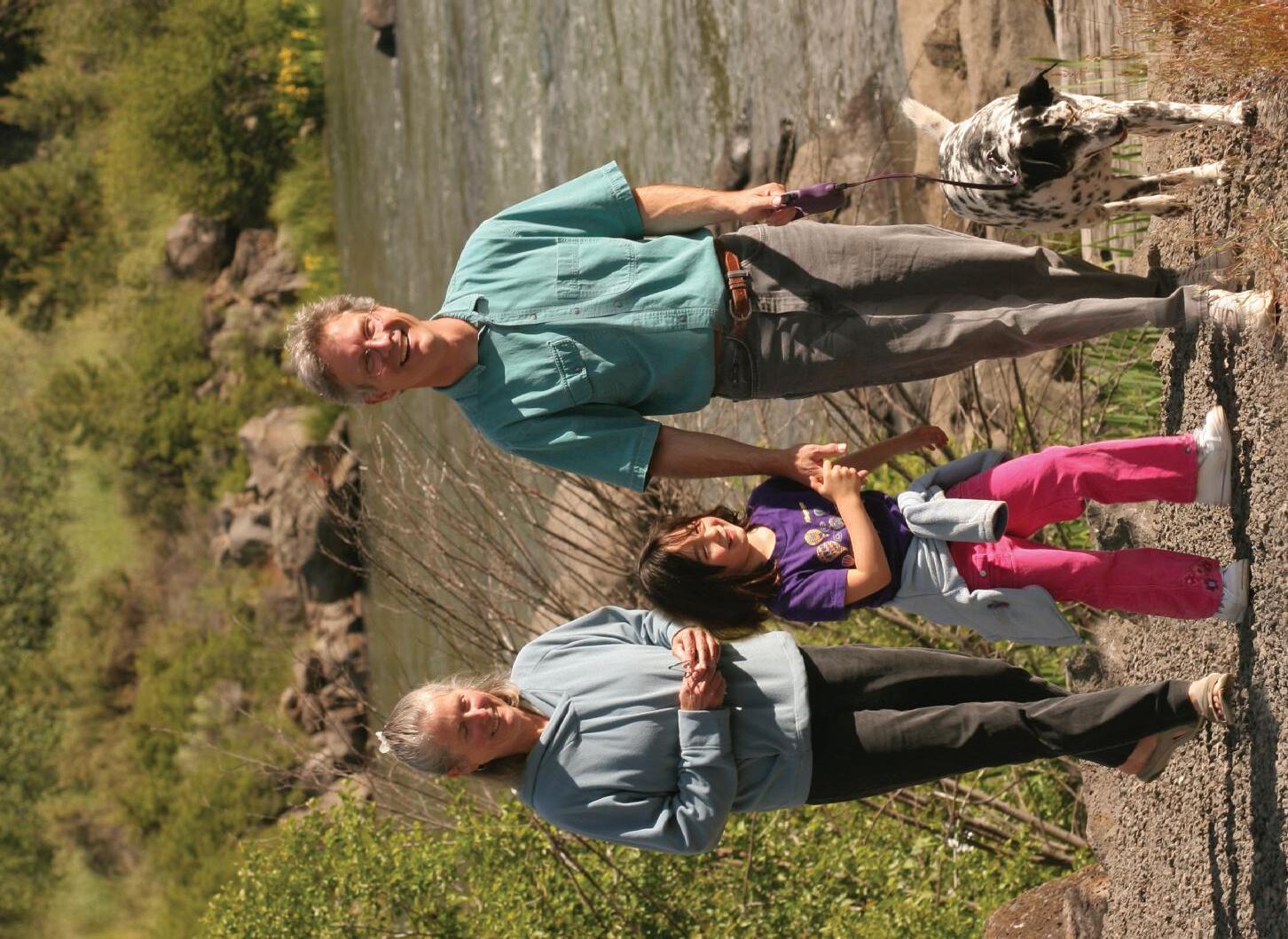
26 minute read
Three Sisters Loop
At the heart of the Oregon Cascades lies the Three Sisters Wilderness, named for three 10,000-foot volcanic peaks that loom over the forested slopes below. The Three Sisters Loop traces portions of three National Scenic Byways – McKenzie Pass – Santiam to the north, Cascade Lakes on the eastern slope, and West Cascades facing the sunset – for some stunning scenery and incredible habitat diversity at nearly 50 prime birding sites. Eleven species of woodpeckers nest between Santiam and McKenzie Passes, including Lewis’s, White-headed, and Black-backed, plus all three western sapsuckers. Cache Mountain and the Meadow Lake Basin host Blue and Ruffed Grouse and nesting Vaux’s Swift. The Cascade Lakes Highway features Sparks Lake, with its stunning views of South Sister, plus breeding Savannah Sparrow and Western Meadowlark (Oregon’s state bird) in the meadow. Further south, the marshes of Hosmer Lake set the scene for Yellow-headed Blackbird and American Bittern. The Newberry Volcanic National Monument east of the Deschutes River showcases the most recent volcanic activity in the Oregon Cascades as well as the Gray-crowned Rosy-Finches of Paulina Peak.
Waterfalls and river birds abound on the Three Sisters loop with Sahalie and Koosah Falls on the Upper McKenzie River home to American Dipper, Winter Wren, and Harlequin Duck. Salt Creek Falls to the south is well known as the only nesting site in Oregon for the enigmatic Black Swift.
67. Cline Falls State Park Oregon State Parks. From Redmond, at the N Hwy 97/W 126 junction; L on W Hwy 126 (Highland Avenue, towards Sisters); 4.2 mi to signed L into park driveway; 0.4 mi down hill to parking area.
Riparian habitat in Deschutes River Canyon with sagebrush and rimrock upland and juniper/pine mix along river; residentCanyonWren,AmericanDipper, Golden Eagle, Prairie Falcon, and Song Sparrow; excellent mix of songbirds in spring and fall migration; concentration of wintering sparrows and finches; trail leads upstream from parking area.
Sponsor: National Fish and Wildlife Foundation
68. Three Creek Lake
Deschutes NF, Sisters RD. From downtown Sisters, S on Elm St; changes to FR 16 at city limits; 14.3 mi to meadow; 15.4 mi to Three Creek Lake; in midsummer, FR 370 below lake leads 13.8 mi to Todd Lake. 4WD AND DRY WEATHER ONLY.
Glacial alpine lake surrounded by subalpine forest with wet meadow below; nesting Williamson’s Sapsucker, Black-backed Woodpecker, Hammond’s Flycatcher, Western Tanager, MacGillivray’s Warbler; many amphibians and highest location in Oregon for migrating Solitary Sandpiper; easy 1.1-mi trail from inlet on N side of lake leads to Little Three Creek Lake; difficult 2.7-mi trail leads to summit of Tam McArthur Rim.
69. Black Pine Spring
Deschutes NF, Sisters RD. From Sisters, S on Elm St; changes to FR 16 at city limits; 7.6 mi to L on FR 550 into dispersed camping and parking area in small basin.
Hillside springs feed mixed conifer grove surrounded by ponderosa pine forest; excellent for resident Williamson’s and wintering Red-breasted Sapsuckers; resident forest songbirds include Red Crossbill, nuthatches, Mountain Chickadee, Brown Creeper, and Golden-crowned Kinglet; productive in migration and summer for forest thrushes, warblers, Cassin’s Vireo, and Western Tanager; FR 16 plowed in winter, but not FR 550.
Sponsor: National Forest Foundation old-growth pine and aspen; area above campground contains small burn surrounded by pine/manzanita habitat; resident White-headed Woodpecker plus six addítional woodpecker species; resident Pygmy Nuthatch, Cassin’s Finch, Red Crossbill; nesting Dusky and Olive-sided Flycatchers; Fox Sparrow and Green-tailed Towhee in manzanita.
Sponsor: Deschutes National Forest
71. Trout Creek Swamp
Deschutes NF, Sisters RD. From Sisters, 5.7 mi on Hwy 242 to FR 1018; L towards Whispering Pines campground 4.3 mi to FR 1520; L 0.1 mi to parking across from campground; canyon hillside begins 1 mi below swamp on FR 1520.
Wet meadow surrounded by mature mixed conifer forest; manzanita scrub on Trout Creek Canyon hillside below swamp; unique for westside crossover species, including Chestnut-backed Chickadee and Pacific-slope Flycatcher; nesting Ruffed Grouse, Pileated Woodpecker, Lincoln’s Sparrow, Williamson’s Sapsucker, and Hermit and Townsend’s Warblers (plus possible hybrids); canyon hosts nesting warblers and sparrows.
Sponsor: Leupold & Stevens, Inc.
72. Dee Wright Observatory
73. Lava Camp Lake
Deschutes NF, Sisters RD. From downtown Sisters, Hwy 242 E 10.3 mi; from Hwy 126 near Belknap Springs, Hwy 242 W 26 mi (0.6 mi E of Dee Wright Observatory); 0.6 mi down FR 900 to lakeshore.
Mixed conifer forest on Cascade Crest adjacent to expansive lava flow; forest nesting species include Three-toed Woodpecker, Gray Jay, Red and Whitewinged Crossbill, Blue Grouse, and Clark’s Nutcracker; adjacent to Pacific Crest Trailhead and Three Sisters Wilderness;moderate1.3-mihiketoDeeWright Observatory;moderate5.8-milooptrailto Scott Pass and Matthieu Lakes.
75. Camp Polk Meadow
Deschutes Basin Land Trust. From Hwy 126, 2.8 mi E of Sisters; N on Camp Polk Rd 3.2 mi to signed driveway on R. From Sisters, Locust St/Camp Polk Rd N 3 mi to R at Camp Polk Rd; 0.5 mi to driveway on L; park in designated lot near interpretive sign.
Hindman Springs Unit; spring-fed marsh, ponds, upland and forest habitats; short easy trail open to public; wide diversity of birds in all seasons, including rails, snipe, raptors, sparrows, and warblers; historic site with oldest structure in Deschutes County.
Sponsor: Paradise Birding
76. Indian Ford Meadow
Deschutes Basin Land Trust. From Sisters, Locust St/Camp Polk Rd; N 2.8 mi to Indian Ford Rd; park along road and enter at unlocked gate. Riparian, wetland, and grassland surrounded by pine forest; wide variety of warblers in spring migration; Calliope Hummingbird and Northern Goshawk nest annually; Blue Jay has wintered; hiking allowed on E side of creek only.
Sponsor: American Bird Conservancy
74. Scott Lake & Hand Lake
77. Calliope Crossing
70. Cold Springs Campground
Deschutes NF, Sisters RD. Hwy 242 E from Sisters 4 mi to campground entrance on R; park in day use area. Two springs flow into small basin with
Willamette NF, McKenzie River. From Sisters, Hwy 242 E 10.9 mi. From Hwy 126 near Belknap Springs, Hwy 242 W 25.4 mi; park at McKenzie Pass. Accessible trail to stone observatory surroundedbylavaflowswithpanoramic views of Cascade peaks; easy to difficult trail winds through lava to Belknap Crater; excellent viewing of forest species including Clark’s Nutcracker, Red Crossbill, and possible Northern Goshawk; rare White-winged Crossbill and Pine Grosbeak; House and Rock Wrens in lava fields; excellent for migrating raptors; accessible in summer only, not recommended for travel trailers.
Sponsor: Leupold & Stevens, Inc.
Willamette NF, McKenzie River RD. On Hwy 242, 15 mi E of junction with Hwy 126 or 5 mi W of Dee Wright Observatory; park at Benson Trailhead, adjacent to Scott Lake. Trail connects two lakes with diverse habitats; at Scott Lake, Bufflehead have nested; Spotted Sandpiper nests along lake edge; Lincoln’s Sparrow in wetland; Tree Swallow in dead trees; breeding Pine Siskin, Hermit Thrush, Clark’s Nutcracker, and Evening Grosbeak in forest; Hand Lake has grasslands, old lava flow, conifer forest, and wet meadow; fall montane shorebird migration stopover; unusual species include Semipalmated Sandpiper, Western, Least and Baird’s Sandpipers; White-winged Crossbill and Three-toed Woodpecker.
Deschutes NF, Sisters RD. From Sisters, Locust St/Camp Polk Rd; N 2.8 mi to Indian Ford Rd; L (N) 2.1 mi to Pine St; L 0.1 mi across creek to junction with FR 900; park along road to R. Dense riparian habitat adjacent to dry ponderosa pine forest; named for nesting Calliope Hummingbird; regular nesting American Redstart, Williamson’s Sapsucker, Cassin’s Vireo, and Northern Goshawk; excellent songbird diversity in all seasons; noted for rarities in migration; pine forest hosts nesting Gray Flycatcher and resident Pinyon Jay and Northern Pygmy-Owl; trails on both sides of Indian Ford Creek 1-mi upstream and 0.5-mi downstream.
Sponsor: Oregon Field Ornithologists
78. Indian Ford Campground
Deschutes NF, Sisters RD. From Sisters, Hwy 20/126; NW 5.5 mi to R on Indian Ford Rd; R immediately into campground; day use parking; campground gated in winter.
Mature ponderosa pine forest bisected by Indian Ford Creek and riparian habitat; resident White-headed Woodpecker, Northern Pygmy-Owl, Pygmy Nuthatch; nesting Dusky Flycatcher, Green-tailed Towhee, and Cassin’s Vireo; excellent for wintering sparrows and migrating songbirds; trail leads 0.8-mi downstream from campground to edge of private property.
79. Gobbler’s Knob & Glaze Meadow
Deschutes NF, Sisters RD. From Hwy 20/126 NW of Sisters; L (W) on FR 300 (across Hwy, opposite Indian Ford Rd) 0.6 mi down hill and park near gate at historic corral.
Wet meadow surrounded by pine and mixed conifer forest; adjacent swamp, riparian, and manzanita habitats; meadow and ponds host nesting snipe, waterfowl, rails, bluebirds, and swallows; White-headed Woodpecker, Northern Goshawk, and nuthatches resident in forest with nesting Cassin’s Vireo and Williamson’s Sapsucker; riparian habitat invites Red-naped Sapsucker, warblers, flycatchers, and rare Red-eyed Vireo; Gobbler’s Knob hosts nesting Fox Sparrow, Orangecrowned Warbler, Green-tailed Towhee, and Cassin’s Finch; excellent ski-in for wintering sparrows.
Sponsor: American Bird Conservancy
80. Cinder Beach at Suttle Lake
Deschutes NF, Sisters RD. From Sisters,13.3 mi NW on Hwy 20/126 to FR 2070 (well-signed); L 0.2 mi. to R over bridge; follow signs to Cinder Beach day use parking.
Beach formed as terminal moraine for glacier that carved Suttle Lake; superb, old-growth mixed conifer forest with open water viewing; resident species include Golden-crowned
Kinglet, Brown Creeper, Williamson’s Sapsucker, Pileated Woodpecker, Bald Eagle, American Dipper, and eastern limit of Chestnut-backed Chickadee in Cascades; lake hosts concentrations of migrating and wintering waterbirds, including Hooded and Common Merganser, Barrow’s and Common Goldeneye, Western and Clark’s Grebe, Common Loon, and Surf Scoter; nesting species include Spotted Sandpiper, MacGillivray’s Warbler, and Western Tanager; easy 3.2-mile trail around lake.
81. Link Creek Mouth at Suttle Lake
Deschutes NF, Sisters RD. From Sisters,13.3 mi NW on Hwy 20/126 to FR 2070 (well-signed); L 2.6 mi to day use parking at boat launch.
Long glacial lake surrounded by mixed conifer forest with riparian and marsh habitats at upper and lower ends; 3.2mi trail around lake; 0.5-mi trail to Scout Lake begins across road from W end of campground; resident Bald Eagle, Pileated Woodpecker, Chestnut-backed Chickadee, Pine Siskin, Gray Jay; nesting Osprey, Barrow’s Goldeneye; excellent spot for scoters, loons, and grebes, in migration and winter.
83. Cache Mountain Deschutes NF, Sisters RD. From Sisters,16.9 mi NW on Hwy 20/126 to Corbett Sno-Park; from Santiam Pass, 3.5 mi E to Sno-Park; 3.1 mi on FR 2076 to L on FR 800; 0.9 mi to top of hill; park in circle.
Unique old-growth Douglas-fir and mixed conifer forest with small pond and multiple rivulets draining mountainside; resident Ruffed Grouse, Pileated Woodpecker, Spotted Owl, Gray and Steller’s Jays, Clark’s Nutcracker, and Chestnut-backed Chickadee; nesting Red-breasted Sapsucker, Vaux’s Swift, Hermit Thrush, Evening Grosbeak, MacGillivray’s Warbler, and Olive-sided Flycatcher.
Sponsor: Nancy Fraser
84. Big Lake & Hoodoo Area
WillametteNF,McKenzieRiverRD. From Hwy 20 5.5 mi E of Santiam Junction or 0.7 mi W of Santiam Pass; S at sign for Hoodoo Ski Area and Big Lake Rd; at 0.8 mi L fork for 2 mi to Big Lake Campground; in winter, or for access to Hayrick Butte,parkatRayBensonSno-Parkwhere road branches.
Common Nighthawk, Townsend’s Solitaire, and American Dipper; cottonwoods host warblers and Cedar Waxwing; loons, scaup and scoters may appear on lake in fall. Viewpoint overlooking the lake/meadow.
Deschutes NF, Sisters RD. From Sisters,16.9 mi NW on Hwy 20/126 to Corbett Sno-Park; from Santiam Pass, 3.5 mi E to Sno-Park; 3.1 mi on FR 2076 to junction with FR 800; park along road.
Small basin with 9 primary lakes that drain into Link Creek (see site 81 description); mixed conifer forest with network of marshes, bogs, and riparian habitats; W and E species including Willow Flycatcher, Hooded Merganser, Ring-necked Duck, Bufflehead, Red-breasted and Williamson’s Sapsucker, MacGillivray’s Warbler, Northern Pygmy-Owl, and Lincoln’s Sparrow; snow machine and ATV use in season; best birded on foot.
Paved road leads to campground on deep water lake with scenic views of Mt. Washington; easy walking; lodgepole pine forest with shrubby regrowth and rocky cliffs; Three-toed Woodpecker in burn; shrubs and small conifers at base of Hayrick Butte host nesting Fox Sparrow, Chipping Sparrow, and Dusky Flycatcher; Mountain Bluebird and American Kestrel in open area on way to Big Lake Campground; Mountain Chickadee in campground.
Sponsor: Leupold & Stevens, Inc.
85. Fish Lake Interpretive Site
Willamette NF, McKenzie River RD. On Hwy 126; 1.5 mi S of junction with Hwy 20; W side of hwy. Deepwater lake and smaller potholes in volcanic terrain; mature conifer forest; alder thickets and cottonwoods along lake edges; manzanita thickets in open areas; nesting birds include Bald Eagle, Osprey, Barrow’s Goldeneye, Common Merganser, Pileated Woodpecker,
86. McKenzie Wild and Scenic River Viewpoint
Willamette NF, McKenzie RD. On Hwy 126, 7.4 mi NE of McKenzie Ranger Station; between MP 15 and 16. Newly constructed viewpoint; resting site for Harlequin Duck; river hosts Belted Kingfisher and American Dipper; state flower, Oregon grape, grows in abundance.
Sponsor: Leupold & Stevens, Inc.
87. Delta Old-Growth Trail
WillametteNF,McKenzieRiverRD. From Hwy 126, 0.2 mi S on FR 19 (Aufderheide Forest Drive); W at campground entrance on S side of bridge over McKenzie River; 1 mi to nature trail in day-use area, W end of campground.
Low-elevation, old-growth conifer forest; willow and alder thickets along river; nature trail hosts Hermit Warbler, Swainson’s Thrush, Red-breasted Nuthatch, and Hutton’s Vireo; 5 species of woodpeckers create cavities for others such as Hooded Merganser, Wood Duck, Northern SpottedOwl, Northern Pygmy-Owl, Western Bluebird, Tree Swallow, House Wren, Chestnut-backed Chickadee, and Northern Flying Squirrel.
Sponsor: Willamette National Forest
88. Cougar Reservoir
U.S.ArmyCorpsofEngineers. From Hwy 126, 7 mi W of McKenzie Ranger Station; S on FR 19 (Aufderheide Forest Drive) 3 mi; parking at dam and Terwilliger Hot Springs 4.2 mi S; best access to riparian zone is above reservoir or at bridge crossing 2.5 mi below dam.
Deep, steep-sided reservoir; rocky canyon and riparian below dam, conifer forest on higher slopes; water tower SW of dam has large nesting colony of Cliff Swallows; many Violet-green and Northern Rough-winged Swallows; rocky cliffs and dam may yield Rock Wren and Canyon Wren; occasional Bald Eagle and Belted Kingfisher; parking area near Terwilliger Hot Springs good for viewing waterfowl such as Bufflehead, goldeneyes, and Common and Hooded Mergansers in fall.
Sponsor: U.S. Army Corps of Engineers, Portland District
89. South Fork
McKenzie River
Willamette NF, McKenzieRiverRD. From FR 19; 4.3 mi N of Box Canyon Guard Station; E on FR 1964 for 2 mi to FR 455; 0.2 mi to trailhead.
Two trails with different habitat accessed from one trailhead; trail 3327 accesses old-growth conifer forest; forest species include Winter Wren, Swainson’s Thrush, and Black-throated Gray Warbler; Northern Goshawknestnearby;trail3510goesabove
Elk Creek drainage on south-facing slope; nesting Rufous Hummingbird; Harlequin Duck and American Dipper resident.
Sponsor: Wayfarer Resort
90. Wayfarer Resort
Privately Owned. From Hwy 126; 3 mi W of Vida; cross covered bridge and go 4 mi.
Park-like yard and riparian habitats; residential lowland species like Redwinged and Brewer’s Blackbird; Downy Woodpecker, Hutton’s and Warbling Vireo, and Western Scrub-Jay; also Red-breasted Sapsucker, Wood Duck, and Purple Finch; check in with owners when birding.
Sponsor: Wayfarer Resort
91. Box Canyon & Skookum Meadows
Willamette NF, McKenzie River and Middle Fork RDs. On FR 19; 26 mi S of Hwy 126 or 37 mi N of Hwy 58; trail 3567 to Skookum Meadows starts 2 mi SE of guard station along FR 19; 2 mi hike to meadow.
Box Canyon is a small meadow with willow and alder thickets, bordered by small spruce and pines set in mature conifer forest; adjacent to historic Box Canyon Guard Station and Landis Cabin; Great-gray Owl has occurred; Rufous Hummingbird in meadow; roadless area W of guard station hosts Spotted Owl; nearby Skookum Meadows trail leads to secluded wetland where Northern Waterthrush has occurred.
92. Horsepasture Mountain
Willamette NF, McKenzie River RD.
From Hwy 126, 2.2 mi W of McKenzie Ranger Station; S on FR 2638 (Horse Creek Rd) for 1.7 mi; R on FR 1993 just past Horse Camp Campground; paved, one-lane road 8.5 mi to Horsepasture trailhead.
Diverse area with variety of forested and open habitats along paved access road with pulloffs; 1.5 mi trail to top of mountain; good for migrating raptors, nesting Townsend’s Solitaire, Western Bluebird, and Dusky Flycatcher; great wildflower show in early July.
93. Oakridge
City of Oakridge. MP 34 on Hwy 58; 43 mi E of Eugene.
Town habitats (lawns, trees, shrubs); trail along Salmon Creek at E end of town gives access to riparian thickets; nesting and migrating songbirds such as Yellow Warbler, Warbling Vireo, and Black-capped Chickadee; resident population of Western Scrub-Jay in town; Willamette River has hosted rare nesting Red-eyed Vireo and Yellowbreasted Chat.
Sponsor: Convention and Visitors Association of Lane Co.
94. Hills Creek Wetland
U.S. Army Corps of Engineers. From E end of Oakridge; 1.2 mi SE on Hwy 58; S on Kitson Springs Rd for 0.5 mi; take first R on Diamond Drive; 0.5 mi to left-hand turnout for Hills Creek Powerhouse; park in marked spaces and walk past gate 500 yards downhill on paved road to wetland; dike is good viewpoint.
Ponds and wetland complex surrounded byconiferforestandsmallpatchesofoak woodland; Bald Eagles perch on dead trees;otherspeciesincludeGreenHeron, Northern Pygmy-Owl, Wilson’s and Black-throated Gray Warblers, Hutton’s Vireo, and Cooper’s Hawk; good western pond turtle and beaver populations.
Sponsor: U.S. Army Corps of Engineers, Portland District
95. Salt Creek Falls
Willamette NF, Middle Fork RD. On Hwy 58, 23 mi E of Oakridge, 5 mi W of Willamette Pass; FR 5893 about 0.5 mi to observation site.
Scenic waterfall in mature conifer forest; riparian thickets upstream of falls; Black Swift regular during summer at falls; Northern Waterthrush and American Redstart, rare species in W Oregon, upstream along creek; forest species include Hermit Warbler, MacGillivray’s Warbler, and Red Crossbill. Interpretive panel highlights Black Swift.
Sponsor: Leupold & Stevens, Inc.
96. Gold Lake
Willamette NF, Middle Fork RD. From Hwy 58, 0.5 mi W of Willamette Pass; opposite Gold Lake Sno-Park; N on FR 500 (Gold Lake Rd) 2 mi to lake and campground.
Small lake within mid-elevation conifer forest; extensive bog and riparian thickets; American Dipper in stream flowing out of lake; Three-toed Woodpecker in campground and W side of lake; occasional White-winged Crossbill; breeding Townsend’s Warblers; nature trail on W side of lake hosts unique plant communities and Pied-billed Grebe, Virginia Rail, and Sora; historical records of probable Solitary Sandpiper nesting.
Sponsor: National Forest Foundation
97. Waldo Lake
Willamette NF, Middle Fork RD. From Hwy 58, 2.5 mi W of Willamette Pass or 23 mi E of Oakridge; FR 5897 (Waldo Lake Rd) 13 mi to North Waldo Campground junction; L for 2 mi to campground.
Second deepest lake in Oregon; large lake thus difficult to see waterfowl; main attraction is high elevation forest birds associated with burned forest such as Three-toed and Black-backed Woodpeckers, Mountain Bluebird, and Townsend’s Solitaire; other species include Blue Grouse, Mountain Chickadee, and Rock Wren; Boreal Owl found in fall along Taylor Burn Rd (4WD) N of campground; White-winged Crossbill possible.
Deschutes NF, Crescent RD. From Hwy 58 at Willamette Pass, 0.4 mi SE to R on FR 5810; 2 mi to campground entrance on L; park in day use area. Englemann spruce and mixed conifer forest, with open water and riparian habitat; high concentration of Bald Eagles, especially in fall; mixture of W and E-side birds, including resident Blue Grouse, Pileated Woodpecker, Chestnut-backed Chickadee, and Redbreasted Sapsucker; nesting Western Tanager, Winter Wren, Hermit Thrush, and Hermit Warbler; easy nature trail along Trapper Creek and Odell Lake; nearby access to Diamond Peak Wilderness and Pacific Crest Trail.
Pine Mountain
Deschutes NF, Fort Rock RD. From 27th St in E Bend, 22.5 mi E on Hwy 20 to R on FR 2017, well-signed for Pine Mountain Observatory; continue 8.5 mi to observatory entrance on L; descend S side of mountain 4.6 mi on FR 2017 to R on FR 23; 34 mi to junction at Hwy 20 (3.9 mi E of FR 2017).
Ponderosa pine forest, with lower juniper belt, surrounded by sagebrush desert; south side of mountain features steep rimrock cliffs and shrub-covered hillsides; superb diversity of nesting birds from Brewer’s Sparrow, Sage Thrasher, and Loggerhead Shrike to
Green-tailed Towhee, Orange-crowned Warbler, Fox Sparrow, and Canyon Wren; pine forest hosts resident specialties such as Pygmy Nuthatch, MountainChickadee,andWhite-headed Woodpecker; juniper forest supports nesting Black-throated Gray Warbler and Pinyon Jay; excellent for migrating raptors, especially in fall; observatory offers summer evening astronomy programs; loop road passes near isolated desert springs and through burn before returning to hwy.
100. Tumalo State Park
Oregon State Parks. From Bend, at Hwy 20/97 junction at N end of town; 3.5 mi N on Hwy 20 (towards Sisters) to L on O.B. Riley Rd; 1 mi to river crossing and R entrance to day use area of park. Riparian habitat on Deschutes River with mixed pine along river and park grounds; surrounded by juniper/ sagebrush upland with rimrock; excellent year-round birding, especially in migration; common migrant songbirds of region can be seen along river; resident birds include Mountain Chickadee, Pygmy Nuthatch, Song Sparrow, American Dipper, Belted Kingfisher, Black-billed Magpie, and Canyon Wren; easy trails lead 0.8-mi downstream on both sides of river and 0.5-mi upstream on E side.
101. Sawyer Park
Bend Metro Parks and Recreation
District. From N Third St in Bend, W on O.B. Riley Rd; 0.5 mi to park entrance on W side of road. From Hwy
97 N, exit Empire Rd; L from off-ramp 0.4 mi; through light at 3rd Street to T at O.B. Riley Rd; L 0.1 mi to park entrance on R; parking not plowed in deep snow.
Riparian habitat with juniper and pine upland along Deschutes River; bridge across river to well-maintained trail that extends 2-mi downstream and 2-mi upstream; Wood Duck, Hooded Merganser S of bridge in winter; resident American Dipper; good for uncommon resident Anna’s Hummingbird; diversity of songbirds, especially in migration.
Sponsor: Wild Birds Unlimited, Bend
102. Pilot Butte Viewpoint habitat along Tumalo Creek with mixed conifer, aspen and willow in canyon and pine/manzanita upland; burn on hill W of creek; easy to moderate multi-use trails; nesting species include Williamson’s Sapsucker, Lewis’s Woodpecker, White-headed Woodpeckers, Pygmy Owls, Fox and Vesper Sparrows, Green-tailed Towhee, Pine Siskin, and American Dipper; superb for migrant songbirds, especially warblers; 8.5-mi of hiking trails in park S of Shevlin Rd, including 2.5-mi trail to forest boundary continuing to Tumalo Falls.
Oregon State Parks. From N of Bend, Hwy 97 S to Hwy 20 Exit (to Burns); 2.6 mi S on 3rd St to L on Greenwood Ave/Hwy 20 E; 0.7 mi to park entrance on L.
Small cinder butte near E edge of Bend with juniper/sagebrush habitat and cultivated trees at summit; excellent stopover for migrant songbirds, including Gray-crowned Rosy-Finch in late fall; resident species include Mountain Chickadee, Pygmy Nuthatch, and Western Scrub-Jay; steep trail climbs butte from lower parking area.
103.
104. High Desert Museum
Privately Owned. From Bend, 6 mi S on Hwy 97 to L into museum driveway. Superb natural and cultural history museum, with paved outdoor trails through ponderosa pine woods; wide variety of educational programs, including daily interpretive talks on raptors, with several live birds on display; outdoor habitat includes running trout stream and small ponds with typical resident bird species of ponderosa pine and streamside habitats; resident Mountain Chickadee, Pygmy Nuthatch, and White-headed Woodpecker.
Sponsor: Oregon Tourism Commission
105. Dillon to Benham Falls Trail
Deschutes NF, Bend RD. From Hwy 97 in Bend, exit Colorado St; 1.6 mi W to L on Century Dr. traffic circle; 5.2 mi S on Century Dr. (FR 46/OR 420) to FR 41; 2.7 mi S on FR 41 to 4120; L 0.8 mi to Dillon Falls campground. Scenic trail along Deschutes River.; access to riparian, meadow and pine forest habitats; good for migrant songbirds; nesting Western Tanager, Dusky Flycatcher, Yellow-rumped Warbler, and Osprey; resident American Dipper, Belted Kingfisher, nuthatches, Clark’s Nutcracker, and Steller’s Jay; easy trail follows river upstream 3.5-mi past meadow and slough to Benham Falls.
Sponsor: Leupold & Stevens, Inc.
106. Sunriver Nature Center
Privately Owned. From Bend, 12 mi S on Hwy 97 to R on S Century Drive (FR 40, well-signed for Sunriver Resort); 1.5 mi to Sunriver entrance; 0.1 mi to map kiosk on R; pick up free map and follow signs to nature center. Small lake, ephemeral wetland, wet meadow, dry meadow, and riparian area surrounded by pine and some mixed conifer; resident birds include Mountain Chickadee, woodpeckers, Red-winged Blackbird, Northern Goshawk, Red-tailed Hawk, and Great Horned Owl; Rough-legged Hawk, Northern Harrier, good finch and sparrow concentrations in winter; short walk to river leads to riparian and open water habitats, productive in migration for warblers, flycatchers, and swallows; marshes host Marsh Wren and rails in nesting season; rarely Green Heron, Great Gray Owl, and Red-shouldered Hawk; staffed interpretive center and easy trails.
Birding Tip
Watch the sun. At a given site, position yourself so the sun is shining at your back. This will help you avoid staring at confusing silhouettes and will allow you to better enjoy the full colors of the many of species that occur in the Cascades.
107. Tumalo Falls
Deschutes NF, Bend RD. From Bend at S Hwy 97, exit Colorado Avenue; R (W) 0.5 mi to R on Broadway; 0.25 mi to L on Galveston; after 1 mi, Galveston changes to Skyliners Road (FR 4601); 9.7 mi on 4601 to sharp R across creek, then L on FR 4603; 2.4 mi to day use parking area below falls.
Riparian, burned forest, and some marsh habitat surrounded by ponderosa pine forest; resident Blue Grouse, Pygmy Nuthatch, Mountain Chickadee, Dark-eyed Junco, Red Crossbill, and American Dipper; nesting species include Nashville and MacGillivray’s Warblers, Williamson’s Sapsucker, and Western Tanager; many trails including difficult 3.3-mi hike to Swampy Lakes (site 108); cross-country ski trail to Shevlin Park (site 103).
108. Swampy Lakes
Deschutes NF, Bend RD. From Hwy 97 in Bend, exit Colorado St; 1.6 mi W to Century Dr. traffic circle; 13.9 mi SW on Century Dr. (FR 46/OR 420) to signed parking area and trailhead on R (N) side of highway.
Unique 400-acre basin with numerous wet meadows and shallow lakes surrounded by pine and mixed conifer forest; resident species include Steller’s Jay, Mountain Chickadee, Red Crossbill, White-headed and rare Pileated Woodpecker; nesting species include Ruby-crowned Kinglet, Western Tanager, Spotted Sandpiper, and numerous flycatchers; moderate 2-mi hike to shelter; excellent cross-country skiing with Gray Jay and nuthatches.
Northern Goshawk; nesting Barrow’s Goldeneye, Bufflehead, Common Merganser, and Spotted Sandpiper, plus many forest songbirds; excellent non-motorized boating along miles of shoreline.
110.
Deschutes NF, Bend RD. From last Mt. Bachelor entrance, 4.9 mi (past Sparks Lake boat launch entrance) to parking area on L.
Nesting Vesper and Savannah Sparrows, Tree Swallow, Mountain Bluebird, Western Meadowlark, and Say’s Phoebe; waterbird viewing on N end of lake.
113. Crane Prairie Reservoir Deschutes NF, Bend RD. From Cascades Lakes Hwy (FR 46) 6.4 mi S of Lava Lake to FR 40; L 2.9 mi to FR 4270; R 2 mi to junction with FR 4250; R (still on FR 4270) 1.25 mi to resort entrance.
Resort at NE corner of Crane Prairie Reservoir; open water habitat surrounded by lodgepole pine and mixed conifer forest; reservoir hosts high concentration of waterfowl, especially in spring migration; nesting Osprey, Bald Eagle, and Northern Goshawk; canoe trail along E shore provides excellent viewing of waterbirds.
Sponsor: National Fish and Wildlife Foundation
114. Quinn River
116. Sheep Bridge at Twin Lakes
Deschutes NF, Bend RD. From La Pine on S Hwy 97, R (W) on FR 43; 11.1 mi to L on FR 42; 4.6 mi to L on FR 4260; 0.7 mi to R on FR 070; 0.5 mi to campground; FR 4260 continues 1.25 mi to Twin Lakes Resort and 1.1 mi further to lakeshore at Gull Point Campground. Deschutes River inflow to upper arm of Wickiup Reservoir; riparian habitat leading to open water surrounded by mixed conifer forest; river channel hosts nesting warblers and flycatchers; forest supports nesting Western Tanager and Olive-sided Flycatcher; lake invites an abundance of waterfowl; Sheep Bridge sees high concentration of Bald Eagle and Osprey; five falconspecies recorded in migration.
Deschutes NF, Bend RD. From Hwy 97 in Bend, exit Colorado St; 1.6 mi W to Century Dr. traffic circle; 32.9 mi S on Century Dr. (FR 46/OR 420) past Elk Lake to FR 4625; L 1.2 mi to parking at boat launch.
Shallow, marshy lake surrounded by lodgepole pine forest; nesting Hermit Warbler, Yellow-headed Blackbird, American Bittern, rails, Marsh Wren, Bufflehead and occasional Sandhill Crane; resident Bald Eagle and good resident woodpecker diversity, including Three-toedWoodpeckerandWilliamson’s Sapsucker; superb for canoe or kayak birding; no motorized craft allowed on lake.
112. Cultus River Trail
Deschutes NF, Bend RD. From Cascades Lakes Hwy (FR 46) 6.4 mi S of Lava Lake; R on FR 4630; road crosses Cultus River after 50 yds; park along road.
Campground at Crane Prairie Deschutes NF, Bend RD. From Cascades Lakes Hwy (FR 46), campground entrance 3.5 mi S of junction with FR 40; park in day use area. Multiple springs entering Crane Prairie Reservoir feed lakeshore wetlands surrounded by lodgepole pine forest; large Double-Crested Cormorant and Great Egret rookery; nesting Bald Eagle, Osprey, Bufflehead, Northern Goshawk, and owls, plus Black-backed and Three-toed Woodpeckers; boat launch and trail to Osprey Point.
Sponsor: National Forest Foundation
115. Round Mountain
117. Wickiup Butte
Deschutes NF, Bend RD. From La Pine on S Hwy 97, R (W) on FR 43; 10.6 mi to L on FR 4380; 3.5 mi to L on FR 4260 (Wickiup Dam); 2.3 mi to R into Wickiup Butte campground.
Deschutes NF, Bend RD. From last Mt. Bachelor entrance, continue on Cascade Lakes Highway (FR46) 4.2 mi to signed L on gravel road; 1.6 mi to parking area.
Remnant glacial valley with open water, marsh, and grassland, surrounded by lodgepole pine forest; excellent for migrating waterfowl and raptors, including Red-shouldered Hawk and
Riparian habitat surrounded by lodgepole pine and mixed conifer forest; easy 0.5- mi trail leads to head of river as it emerges from base of Bench Mark Butte; nesting species include American Dipper, flycatchers, warblers, woodpeckers, and finches.
Sponsor: American Bird Conservancy
Deschutes NF, Bend RD. Exit Hwy 97 S at Vandevert Rd; W 1 mi; L on Huntington Rd 1.1 mi to R at Fall River Rd (FR 42); 11 mi to R at FR 4250; 3.9 mi to L on FR 4255; after 0.1 mi L on FR 4256; 1 mi to parking at gate. Steep cinder cone covered with mixed conifer forest above pine forest below; resident Spotted Owl, Blue Grouse, Pileated and other woodpeckers; nesting Hermit Thrush, warblers, Cassin’s Vireo; wide trail leads 1.4-mi and climbs over 700 feet to lookout and panoramic views at summit.
Sponsor: Cascade Natural Gas
Steep shoreline on massive reservoir backed by forested butte; riparian habitat below dam along Deschutes River; viewing anywhere from dam to campground excellent for diving birds, especially in winter and migration; regularly hosts high concentrations of Common Loon and up to five species of grebe; other migrant waterbirds include Greater White-fronted Goose, Tundra Swan, cormorants and gulls, plus some inland rarities such as Greater Scaup, Sabine’s Gull, Red-throated Loon, and Red-necked Grebe; often accessible in winter except after heavy snow.
Sponsor: National Forest Foundation
118. Round Swamp Campground
Deschutes NF, Bend RD. From La Pine on S Hwy 97, R (W) onto FR 43; 10.6 mi to L on FR 4380; 3.5 mi to L on FR 4260 (Wickiup Dam); 3.9 mi to R at junction with FR 44; 3.5 mi on FR 44 to R entrance at campground; FR 44 continues 5.9 mi to junction at FR 46 (Cascade Lakes Highway) near Davis Lake lava flow.
Southern arm of reservoir surrounded by pine and mixed conifer forest; shallow bay excellent for migrant shorebirds, especially in fall and dependent upon fluctuating water levels; high concentrations of common shorebirds, including both yellowlegs, Blackbellied Plover, and Least and Western Sandpipers; at very low water levels, shallower portions become grassland and attract Horned Lark, American Pipit,migratingYellow-rumpedWarbler and rare Lapland Longspur; resident forest species include Steller’s Jay, nuthatches, Mountain Chickadee, and up to six woodpecker species.
119. West Davis Lake
Deschutes NF, Crescent RD. From downtown Crescent on S Hwy 97, R (W) onto Crescent Cut-off (FR 61); 8.5 mi to R on FR 46 (Cascade Lakes Highway); 3.3 mi N to L on FR 4660; 3 mi to R on FR 4669; 1.7 mi to campground entrance; park in day use area; for loop road, return to FR 4660; R around W and N sides of lake to junction with FR 46; 10.3 mi N of S junction with FR 4660.
Large natural lake dammed by lava flow at N end; lake bordered by marsh, dry meadow and riparian habitat, surrounded by ponderosa and lodgepole pine forests; nesting Bald Eagle and Osprey; nesting waterbirds include Cinnamon Teal, Ring-necked Duck, rails, and Western and Eared Grebes; other nesting species include Western and Mountain Bluebirds, Yellowheaded Blackbird, and numerous flycatchers; fall migration excellent for waterbirds, with regular gulls, loons, grebes, and many waterfowl; numerous trails in area; loop road follows W side of lake for viewing various habitats.
120. Fall River Campground
Deschutes NF, Bend RD. Exit Hwy 97 S at Vandevert Rd; W 1 mi; L on Huntington Rd 1.1 mi to Fall River Rd (FR 42); R 10.1 mi to campground; park in day use area.
Crystal-clear spring-fed river with riparian habitat surrounded by mature ponderosa pine forest; easy trail leads 0.8 mi to head of river; nesting Dusky Flycatcher, Western Wood-Pewee, Hermit Thrush, Spotted Towhee; resident Mountain Chickadee, nuthatches, Red Crossbill, and Steller’s Jay.
123. Paulina Lake Campground
Deschutes NF, Fort Rock RD. From Bend, 22.1 mi S on Hwy 97 to L on FR 21; 13.4 mi to L into campground. Lakeside wetland surrounded by lodgepole and subalpine forest; lake hosts concentration of diving ducks in migration; good for migrating gulls, terns, andCommonNighthawk;wetlandhosts nesting Red-winged Blackbird, Marsh Wren, Common Yellowthroat; FR 21 not plowed in winter.
Sponsor: Leupold & Stevens, Inc.
124. Paulina Peak from N side of river, take FR 62 2.5 mi from Hwy 97; take first R after crossing Crescent Creek onto gravel rd; 2 mi to parking at end of road.
Excellent riparian habitat with dense willow, alder, and aspen bordered by mixed conifer and pine forest; one of few sites in Oregon for nesting Northern Waterthrush; nesting Yellow Warbler, WillowandOlive-sidedFlycatchers,and Black-headed Grosbeak; very good for migrating songbirds; hike up or downstream on both sides of river.
Sponsor: National Forest Foundation
127. Crescent Creek
Sandhill
121.
Oregon State Parks. From La Pine, 7.9 mi N on Hwy 97 to L on State Park Rd; 4 mi to R at park entrance. Riparian habitat along Deschutes River at S end of park and Fall River at N end, surrounded by ponderosa pine forest; resident species include Red Crossbill, Mountain Chickadee, all three nuthatches, Brown Creeper, Whiteheaded Woodpecker, and all three accipiters; nesting species include flycatchers, Cassin’s Vireo, and Western Tanager in forest, and swallows, Warbling Vireo, Black-headed Grosbeak, Bullock’s Oriole, and Yellow Warbler along river; home to largest ponderosa pine in Oregon, at 162 feet and approx 500 years old.
Deschutes NF, Fort Rock RD. From Bend, 22.1 mi S on Hwy 97 to L on FR 21; 13.4 mi to R on FR 500; 4.25 mi up very steep, rocky road to lookout at summit.
Premiere location for migrating raptors, especially in fall; nesting Gray-crowned Rosy-Finch, Violet-Green Swallow, and Rock Wren.
Sponsor: National Forest Foundation
125. Cinder Hill Campground, East Lake
Campground
Deschutes NF, Crescent RD. From downtown Crescent, R on Crescent Cut-off (FR 61) 8.3 mi to campground entrance; park in widest parking areas. Dense riparian habitat surrounded by lodgepole pine and mixed conifer forest; nesting Northern Waterthrush; other nesting songbirds include Hermit Thrush, MacGillivray’s Warbler, Chestnut-backed and Mountain Chickadees, and Olive-sided Flycatcher; trail follows creek up and downstream from campground.
Deschutes NF, Fort Rock RD. From Bend, 22.1 mi S on Hwy 97 to L on FR 21; 3 mi to L on FR 2120; 2.4 mi to L on 9736; campground across creek on L. Lodgepole pine forest on Paulina Creek; nesting Green-tailed Towhee, American Dipper, Common Nighthawk, Vesper Sparrow.
Deschutes NF, Fort Rock RD. From Bend, 22.1 mi S on Hwy 97 to L on FR 21; 17.5 mi, past Paulina Lake to East Lake Resort; 0.8 mi on FR 700 to day use parking near campground. Wetland on shore of large lake, surrounded by lodgepole pine and subalpine forest; resident forest species such as Red Crossbill, nuthatches, Mountain Chickadee, Steller’s Jay, Clark’s Nutcracker; nesting species include Bald Eagle, Osprey, Williamson’s Sapsucker, warblers, flycatchers, Pine Siskin, Cassin’s Finch, Green-tailed Towhee and Hermit Thrush.
126. Crescent Creek Mouth, Little Deschutes
Deschutes NF, Crescent RD. From La Pine, 12.1 mi S on Hwy 97 to R on FR 62; 0.5 mi to unsigned R at gravel rd; 0.3 mi to parking at end of road; to view
Sponsor: U.S. Forest Service, Region 6
128. Bingham Park
Klamath County Parks. From downtown Crescent, at S Hwy 97, R (W) 0.5 mi on Crescent Cut-off (FR 61) to park entrance on R.
Dense riparian habitat surrounded by pine forest and grassland; excellent for nesting Northern Waterthrush, as well as Yellow Warbler, Willow Flycatcher, Common Yellowthroat, and Warbling Vireo; high concentration of migrating songbirds; resident Mountain Chickadee, Red-breasted Nuthatch, and Wood Duck, plus migrant Cinnamon and Green-winged Teal; bird in and around campground along Little Deschutes River and adjacent small ponds.
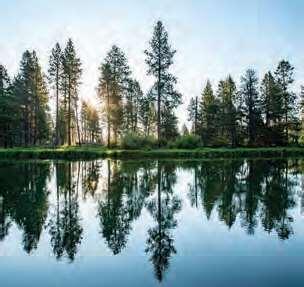
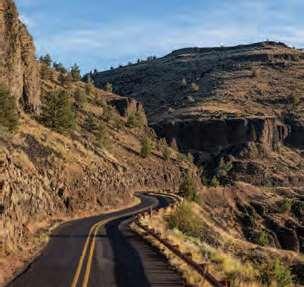
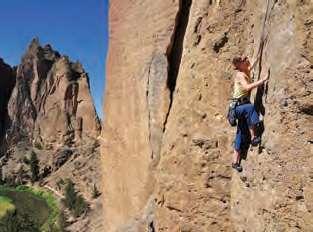
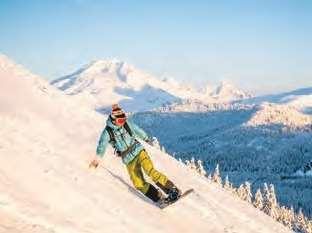


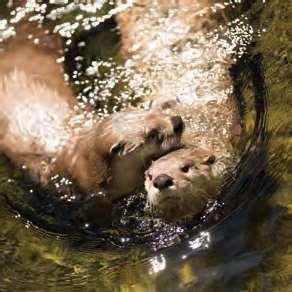

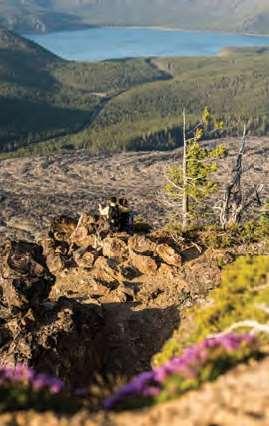
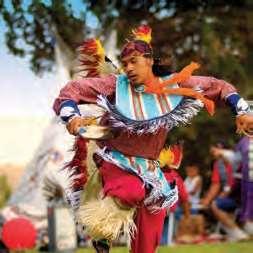
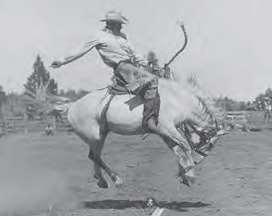
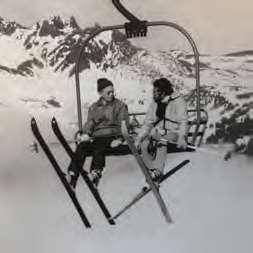
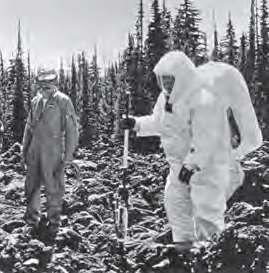
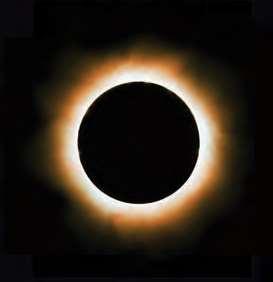
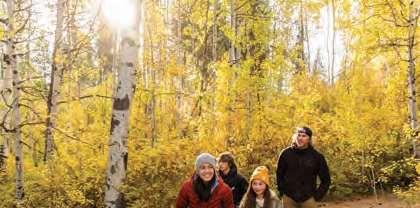

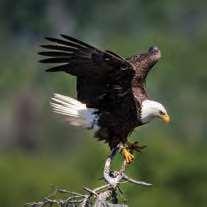
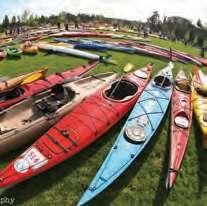
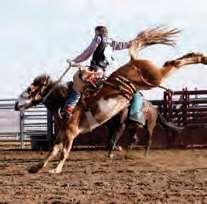
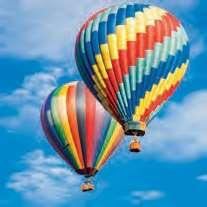
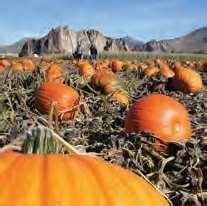
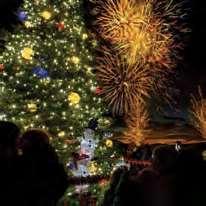
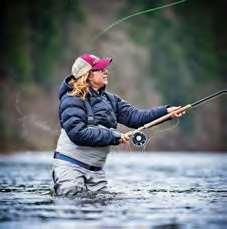
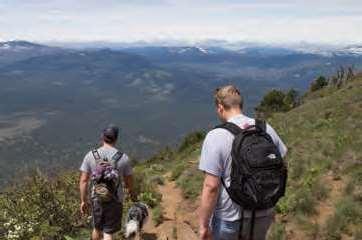
District at 388-5435.
Development Department of the Park & Recreation trail concerns please call the Park Services and
& Recreation District. For questions or to report
River Trail are managed by the Bend Metro Park
The Bend Urban Trail System and the Deschutes administered by the Bend Visitors and Convention Bureau. www.bendparksandrec.org. Funding for this map provided by a City of Bend grant
Foundation to help build the river trail. For more information, see








